All you need to know about the Lone Star Geyser Trail
The Lone Star Geyser Trail is an enjoyable trail along an old service road to Lone Star Geyser. This trail follows the Firehole River to the geyser. It is one of the very few trails at Yellowstone where bicycles are allowed. The Lone Star Geyser Trail is about 4.8 miles round trip. It is slightly downhill on the way out. While on the trail, not only do you get sights and sounds of water accompanying you, but the forest also provides some respite from the summer sun. Let us learn everything there is to know about the Lone Star Geyser Trail.
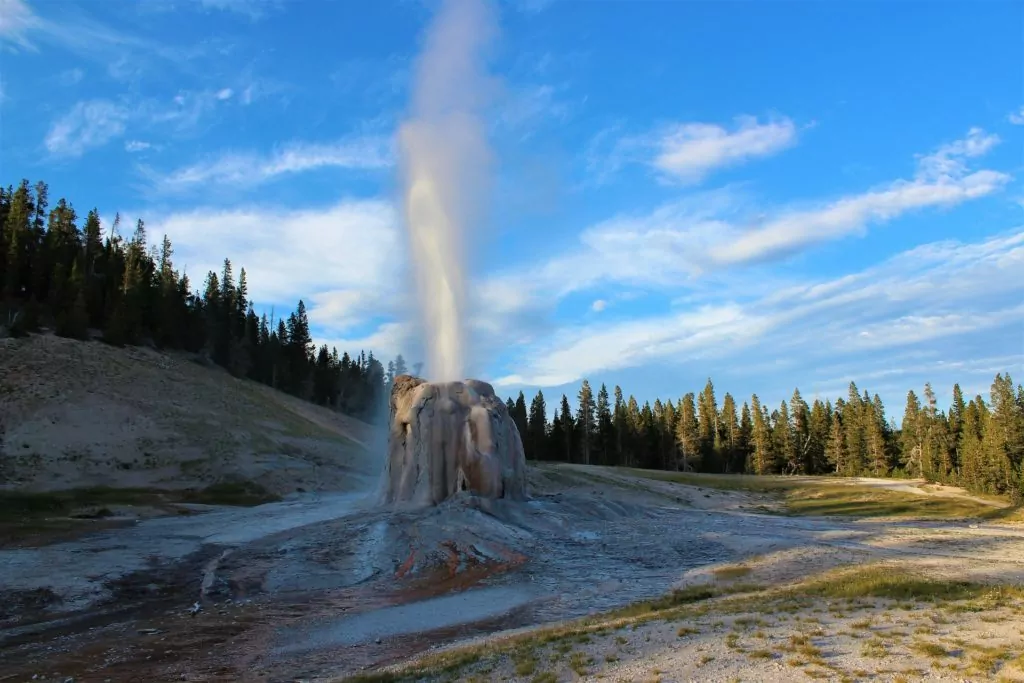
History
The geyser and the trail were named as such because the area is technically a part of Upper Geyser Basin but lies a couple of miles away all on its own. However, just like many features discovered during the Hayden Expeditions, the given name didn’t stick. It was originally dubbed Solitary Geyser, a name that was eventually transferred to another feature along the boardwalks of Old Faithful.
Much like most of the wider trails that we find in Yellowstone, the path to Lone Star used to be a service road. It originally started as a wagon road and was eventually paved to accommodate automobiles. However, cars are no longer permitted but as stated above bicycles are.
Getting there
The Lone Star Trailhead is located 3.5 miles south of the Old Faithful intersection on Grand Loop Road. It is just beyond the Kepler Cascades parking lot which provides good overflow parking should the Lone Star parking lot be full. There is also a composting toilet located at the trailhead and the nearest potable water is located at Old Faithful Visitor Center.
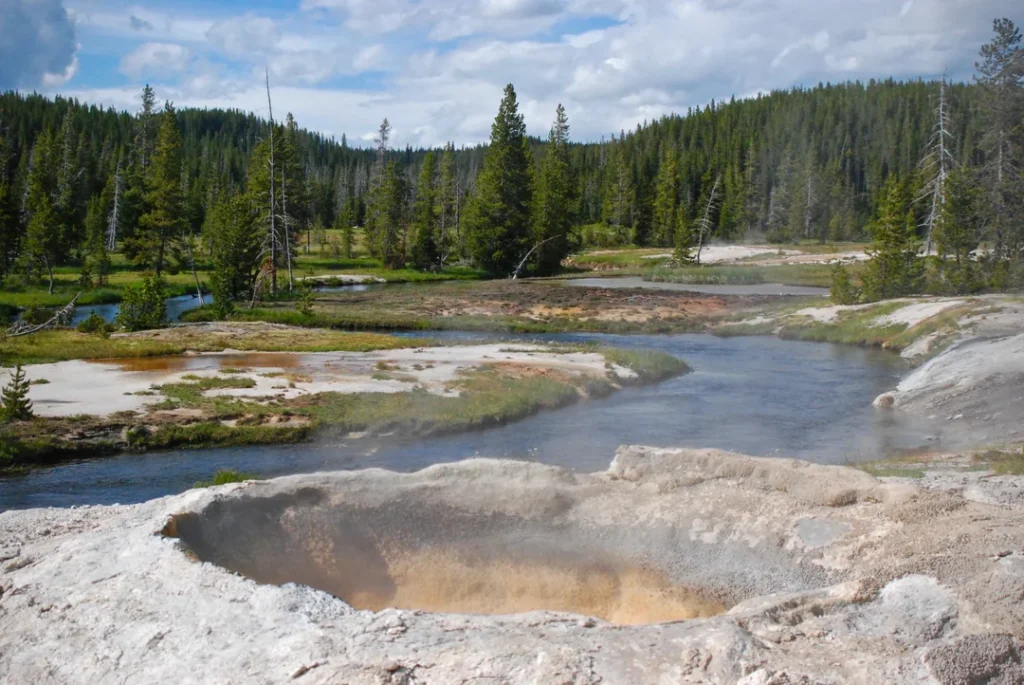
Best Hikes on Lone Star
- Lone Star Trail to Lone Star Geyser – It is a pretty non-strenuous hike, and the rewards greatly outweigh the difficulty. From the Lone Star Trailhead, you will look to head South along the wide paved path. On your left is a dense Lodgepole pine forest and on your right is the Firehole River. You should keep your eyes peeled for pockets of steam that represent thermal vents along the riverbed that gave it the name Firehole. Just half a mile after you will cross a bridge with a serene view in both directions. It is about 5.4 miles long and at an elevation of 75 feet.
- Old Faithful to Lone Star Geyser – Taking this option allows you to enjoy the Lone Star Geyser Basin. It is the largest collection of geysers in the world. You can then escape all the crowds with a loop hike to Lone Star Geyser. From the Southeast end of the Old Faithful Village parking lot, start along the beaten path heading for the Firehole River. Right after crossing the river via bridge, you will reach a junction with the Mallard Lake trail on your left, and on your right will be the Kepler Cascades trail. You should choose the Kepler route. This loop can take 4-6 hours and it does not include walking the Old Faithful Geyser basin before your hike. This hike is about 8.5 miles long and is a fairly moderate hike.
- Lone Star Trail to Shoshone Lake and Geyser Basin – This hike is about 18.6 miles long and at an elevation of 400 feet. It is a very hard hike. However, not only is it one of the most rewarding hikes but also one that leads directly to Shoshone Geyser Basin. Continue straight along the beaten path through the trees until you reach the junction with Howard Eaton and Shoshone Lake trails. After 3.8 miles, you will reach a junction with the Bechler River trail so stay left to continue toward Shoshone Lake. This hike can take 8-12 or more hours to complete.
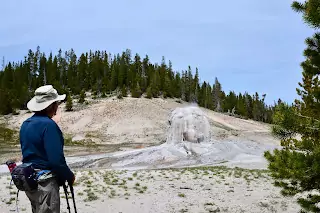
When to hike
The Lone Star Geyser Trail can be hiked from mid-April all the way through early November. The best months for hiking are August and September. Depending on the amount of snowfall that has happened in winter, the snow can remain on the trail until June. It is nice to have snowshoes if you’re planning to hike in springtime. June and July are mosquito season in Yellowstone so remember to pack your insect repellant.
You can also go skiing and snowshoeing at Lone Star during the wintertime. Make sure you are well educated on traveling in avalanche terrain if you’re looking to hike in the mountains during winter conditions.
Precautions
- Stay on boardwalks and designated trails.
- Do not touch the thermal features.
- Pets are not allowed in thermal areas.
- Never feed wildlife.
- Do not approach wildlife.
- Stay at least 100 yards away from bears and wolves.
- Do not shout or harass any wildlife.
- Don’t hike alone.
- Always be alert.
- Never feed a bear.
- Avoid hiking at dusk, dawn, or night.
- Stay out of areas closed for bear management.
- Sleep away from where you cook and eat.
- Do not sleep in clothes that smell like food.
- Keep your camp clean and free of trash.
- Do not run from bear encounters.
- Speak calmly and do not shout at bears.
- When necessary, use bear spray.
- Report conflicts to park rangers.
Permits
- Day Hike Permits – There are no permits required to do any day hiking in Yellowstone National Park. However, there might be some areas that are closed due to high bear activity. Make sure you check out Bear Management Areas before you decide to go out for a hike.
- Backpacking Permits – All overnight stays inside Yellowstone require an overnight camping permit. Actual permits must be picked up in person no more than 48 hours before a trip. Most sites can be reserved in advance by mail, fax, or even in person. Requests that are received before April will be granted by a random lottery. When the lottery is complete, all requests that are submitted after April 1st are processed in the order they are received.
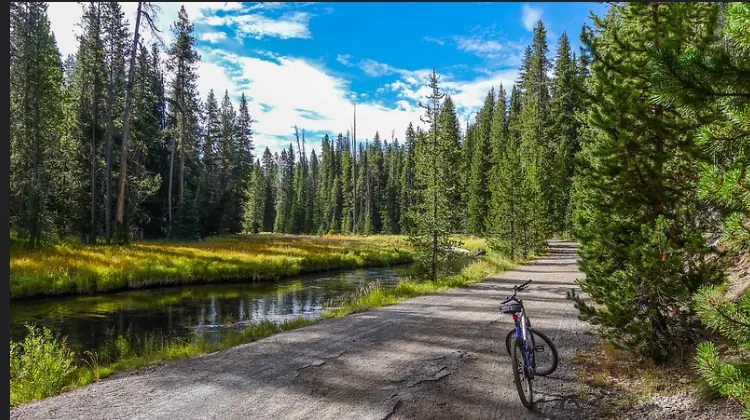
Packing list
- Bear spray
- 2-3 liters of water
- Salty, calorie-rich snacks
- Lunch
- Backpack
- Trekking poles
- Wide-brimmed hats
- Sunscreen, sunglasses
- Bug spray
- Non-cotton hiking shirt
- Rain jacket
- 1st aid kit
- Multi-day backpack for backpacking
- 3-season tent for backpacking
- Sleeping bag
- Sleeping pad
- 3 pair of wool socks
- Seating utensils and straining device
- Sandals or water shoes
- Backpacking stove or fuel
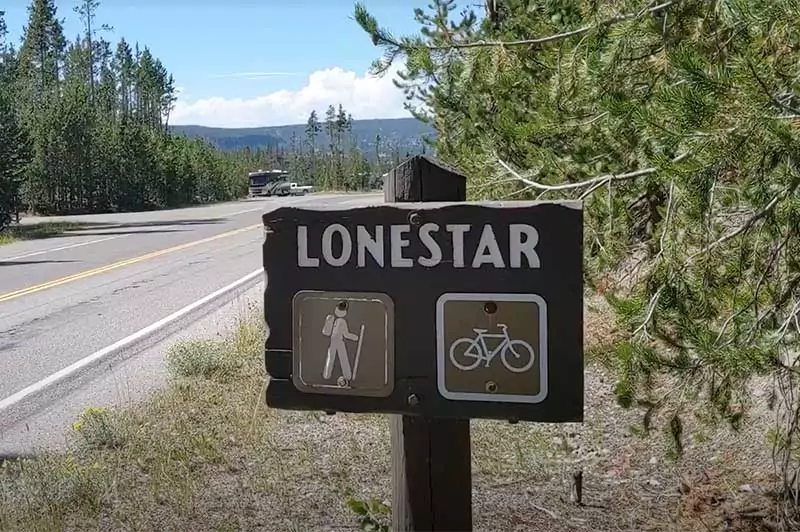
Leave no trace
Please make sure to abide by Yellowstone’s Leave No Trace ethics guidelines and practices so that national parks and public lands are preserved for the enjoyment of future generations and for the people and animals who also call this place home. Obey simple things such as packing out your trash, obeying national park rules, and respecting the peace of the national park is a great way to start. If you’re going on a backpacking trip, make sure you read up on the 7 Leave No Trace Principles.
The Lone Star Geyser Trail in Yellowstone National Park is certainly a delightful hiking route, especially near West Yellowstone, Montana. Once you have completed the hike, you are surely not going to be disappointed and will want to do it again.
You can also read: Yellowstone National Park
